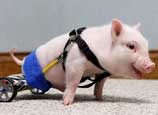
There is no doubt that the Internet and innovations in information systems and database design are bringing about disruptive changes and challenges to journalism. As existing structures in news organizations break down and traditional news outlets struggle to adapt to the new environment, we seem to be at a critical juncture. In the "laboratory" or experimental arena in which new business models, journalism practice and new digital news organizations are emerging and developing, new media and old media are both competing and co-existing in the struggle to survive or die. The key driver of this change is the liquidity of information, the fact that information now flows across boundaries with ever-greater ease.
It is useful to envisage the future of journalism in the space-time created by this new fluidity of information. That is to say the depth, breath, diversity and speed of news production and distribution.
The first dimension is the depth. The future of journalism is likely to be defined by the multiple layering of interactions and news experiences. There will be more interaction between the producers and audiences, between professional journalists and audiences, and greater interaction among audiences. When it comes to news production and distribution, we can foresee the convergence or co-existence of old media and new media, as nearly all the news organizations will produce multimedia and interactive content and distribute it via a variety of platforms, newspaper, TV, radio, the Internet and cell phones.
Depth implies a richer experience for a more active audience as the story is no longer an end product. Instead, it is a process with new information being continually added as new leads are provided by consumers and comments are posted by Web users. News producers not only need to produce distinctive and differentiated news stories, but more importantly they need to engage their audience in the news experience.
In the past, content was the king. Today experience is the king. News producers need to encourage their audience to dive into the subject, to see, hear, feel and even play with the news. This means that while news organizations are still broadcasting to a collective audience, they also need to be narrowcasting to cater to individual needs. This requires personalization and customization. Like Amazon, news producers need to know consumers' likes and dislikes and their consumption behavior so they can provide their audiences with what they want and what they need.
The second dimension is breath. This encompasses news organizations' global strategies to reach the widest audiences. For publishers, especially newspaper publishers, the Internet has disrupted their distribution monopoly, as the market has changed from supply driven to demand driven. The Internet has changed the distribution channels from traditional door-to-door distribution and advertising to multi-media distribution channels. They need to find and create new cost and revenue structures, and reformulate their content and marketing strategies to meet the demands of a fragmented market and to connect with audiences, for example by focusing on local or regional news, launching foreign language websites in emerging markets like China, and making content more searchable and linkable to tap the so called click economy.
The third dimension is diversity. Diversity means the emergence and development of new news genres such as citizen journalism, mobile journalism or data journalism. Unlike traditional journalists who wrote stories and did not care about the audiences' demands or the market response, in the future, the new breed of journalists need to know how to interact, influence and maintain relationships with the online community via social media. In addition, they will play the role of interpreter more than reporter, as they will need to be able to use the data to interpret the news, so-called database journalism or data journalism.
The fourth dimension is speed. Stories are breaking at unprecedented speed. CNN claims that "when we know it, you know it", however, it is becoming the other way round, as social media often break the news before the mainstream media. Journalists will need to be fluent across different media platforms so they can be at the head of the curve. Although it is impossible for journalists to excel in using every medium, they need to grasp the basics of different media and be comfortable with new technology.
With the news environment changing so is the skill-set required of journalists. As well as the traditional skills, such as fact checking and finding reliable sources, interviewing and writing, and understanding the ethical issues, being able to produce multi-media content and master news business models are now just as necessary and important. The formula for the future of journalism will be technology and new tools plus reporting plus business models. The key to unlocking it, the classic question: What does it mean to be a journalist in society?
The authors are scholars with the University of Nottingham, Ningbo, China.
















 Auto-chat app sparks social skills concern: A littile yellow chicken can talk, really?
Auto-chat app sparks social skills concern: A littile yellow chicken can talk, really?


![]()
